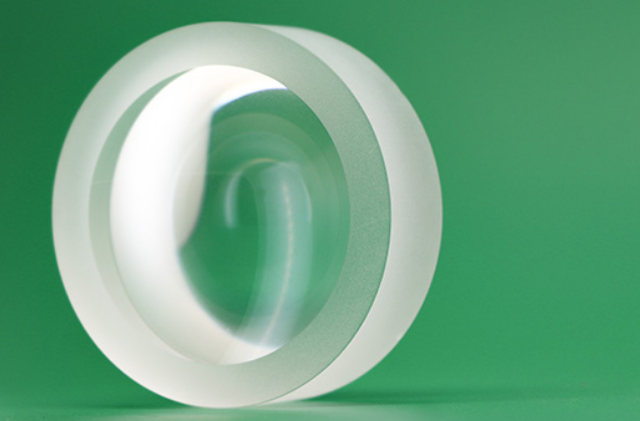What Are the Two Types of Lenses in the Imaging System?
Jul. 13, 2024
Optical Lenses may be divided broadly into two main types: convex and concave. Lenses that are thicker at their centers than at their edges are convex, while those that are thicker around their edges are concave. A light beam passing through a convex lens is focused by the lens on a point on the other side of the lens.
CLZ Optical Co., Ltd. is a manufacturer specializing in the production of optical components, the main products are spherical lens, optical dome, optical window, etc.
Understanding Convex Lenses
Convex lenses, also known as converging lenses, are thicker at the center than at the edges. When light rays pass through a convex lens, they converge or focus at a point on the other side of the lens. This unique property makes convex lenses invaluable in a wide range of optical applications.
Characteristics of Convex Lenses
1. Shape and Structure: Convex lenses are curved outward, resembling the exterior of a sphere. Their thickness decreases from the center towards the edges.
2. Focusing Light: These lenses bend light rays inward towards a common focal point. This ability to concentrate light makes them ideal for magnification and imaging purposes.
3. Magnification: Convex lenses can enlarge objects, making them appear larger than they are. This magnifying effect is utilized in devices such as magnifying glasses, microscopes, and telescopes.
Applications of Convex Lenses
- Cameras: Convex lenses are used in camera systems to focus light onto the film or sensor, creating a sharp image.
- Eyeglasses: In corrective lenses for hyperopia (farsightedness), convex lenses help focus light directly onto the retina.
- Optical Instruments: Devices like microscopes and telescopes rely on convex lenses to magnify distant or tiny objects, bringing them into clearer view.
- Projectors: Convex lenses in projectors focus light to create a sharp, enlarged image on a screen.
Advantages of Convex Lenses
- Clear Magnification: They provide sharp and clear magnification of objects, making them crucial for detailed observation and imaging.
- Versatility: Convex lenses are versatile and used in numerous optical devices and systems.
- Focus Control: They offer precise control over the focus, essential for applications requiring detailed imaging.
Limitations of Convex Lenses
- Aberrations: Convex lenses can suffer from optical aberrations, such as chromatic and spherical aberrations, which can distort the image quality.
- Cost: High-quality convex lenses, especially those used in precision optical instruments, can be expensive.
Exploring Concave Lenses
Concave lenses, or diverging lenses, are thinner at the center and thicker at the edges. When light rays pass through a concave lens, they spread out or diverge. This characteristic makes concave lenses useful for applications that require the dispersion of light.
Characteristics of Concave Lenses
1. Shape and Structure: Concave lenses are curved inward, resembling the interior of a sphere. Their thickness increases from the center towards the edges.
2. Diverging Light: These lenses cause light rays to diverge or spread out, as if they were originating from a single point behind the lens.
3. Image Reduction: Concave lenses reduce the size of objects, making them appear smaller and farther away.
Applications of Concave Lenses
- Eyeglasses: In corrective lenses for myopia (nearsightedness), concave lenses help diverge light rays so they can be properly focused on the retina.
- Lasers: Concave lenses are used in laser applications to expand or spread out the beam of light.
- Optical Devices: Devices like peepholes and certain types of telescopes use concave lenses to widen the field of view and correct specific optical distortions.
- Beam Control: In various optical systems, concave lenses are used to control and shape light beams for different purposes.
Advantages of Concave Lenses
- Image Correction: They are essential for correcting specific vision problems, such as myopia.
- Light Control: Concave lenses provide effective control over the dispersion of light, useful in various optical systems.
- Cost-Effectiveness: Typically, they are less complex and less expensive than convex lenses.
Limitations of Concave Lenses
- Limited Magnification: Unlike convex lenses, concave lenses do not magnify objects; instead, they reduce their apparent size.
- Image Distortion: The diverging nature of concave lenses can cause some distortion, particularly in applications requiring precise imaging.
Choosing Between Convex and Concave Lenses
When selecting between convex and concave lenses for your imaging system, consider the following factors:
Desired Image Outcome
- Magnification vs. Reduction: Choose convex lenses for magnification and bringing distant objects closer. Opt for concave lenses when you need to reduce the size of the image or spread out light.
- Focusing vs. Diverging: Use convex lenses for focusing light to a specific point, essential for clear imaging. Concave lenses are better for applications requiring the dispersion of light.
Application Requirements
- Optical Instruments: For detailed observation tools like microscopes and telescopes, convex lenses are generally preferred. Concave lenses are ideal for applications involving light control and beam expansion.
- Vision Correction: Convex lenses are used for correcting farsightedness, while concave lenses correct nearsightedness.
Cost and Complexity
- Budget Considerations: Convex lenses, especially high-quality ones, can be more expensive and complex. Concave lenses are often simpler and more affordable.
Conclusion
Convex and concave lenses each have unique properties and applications in imaging systems. Convex lenses focus light and magnify objects, making them suitable for cameras, optical instruments, and vision correction. In contrast, concave lenses diverge light and reduce image size, useful in corrective lenses for myopia and light control systems.
For further assistance in selecting the right lens for your needs, contact us or visit our supplier for expert advice and a wide range of high-quality lenses.






















